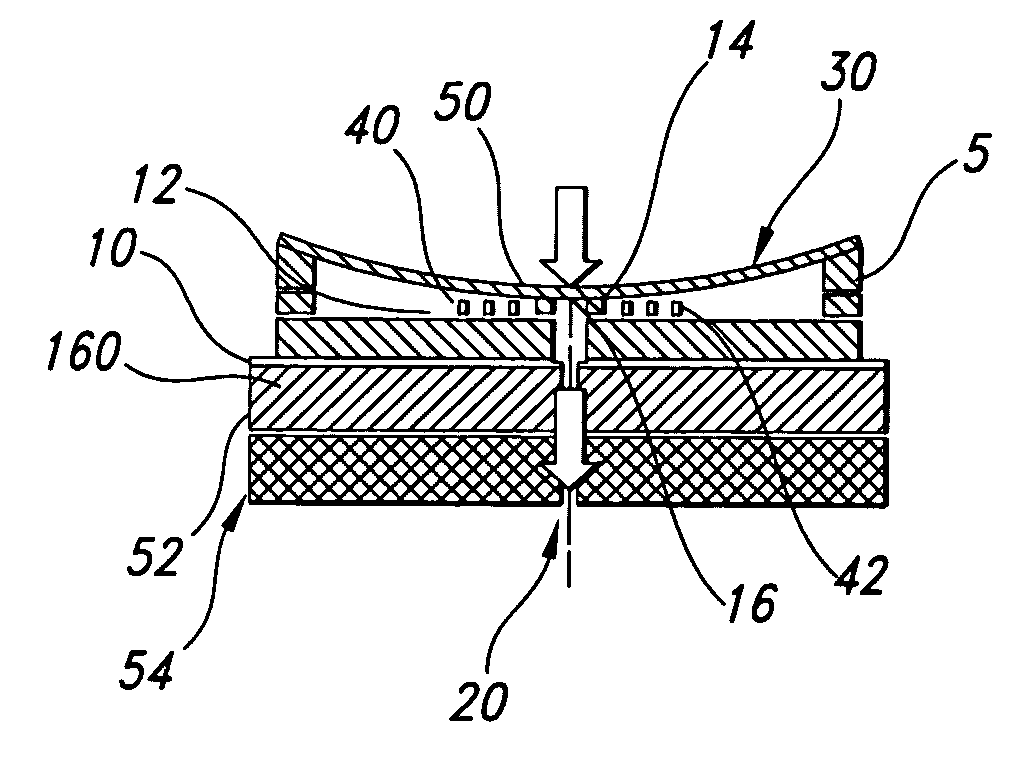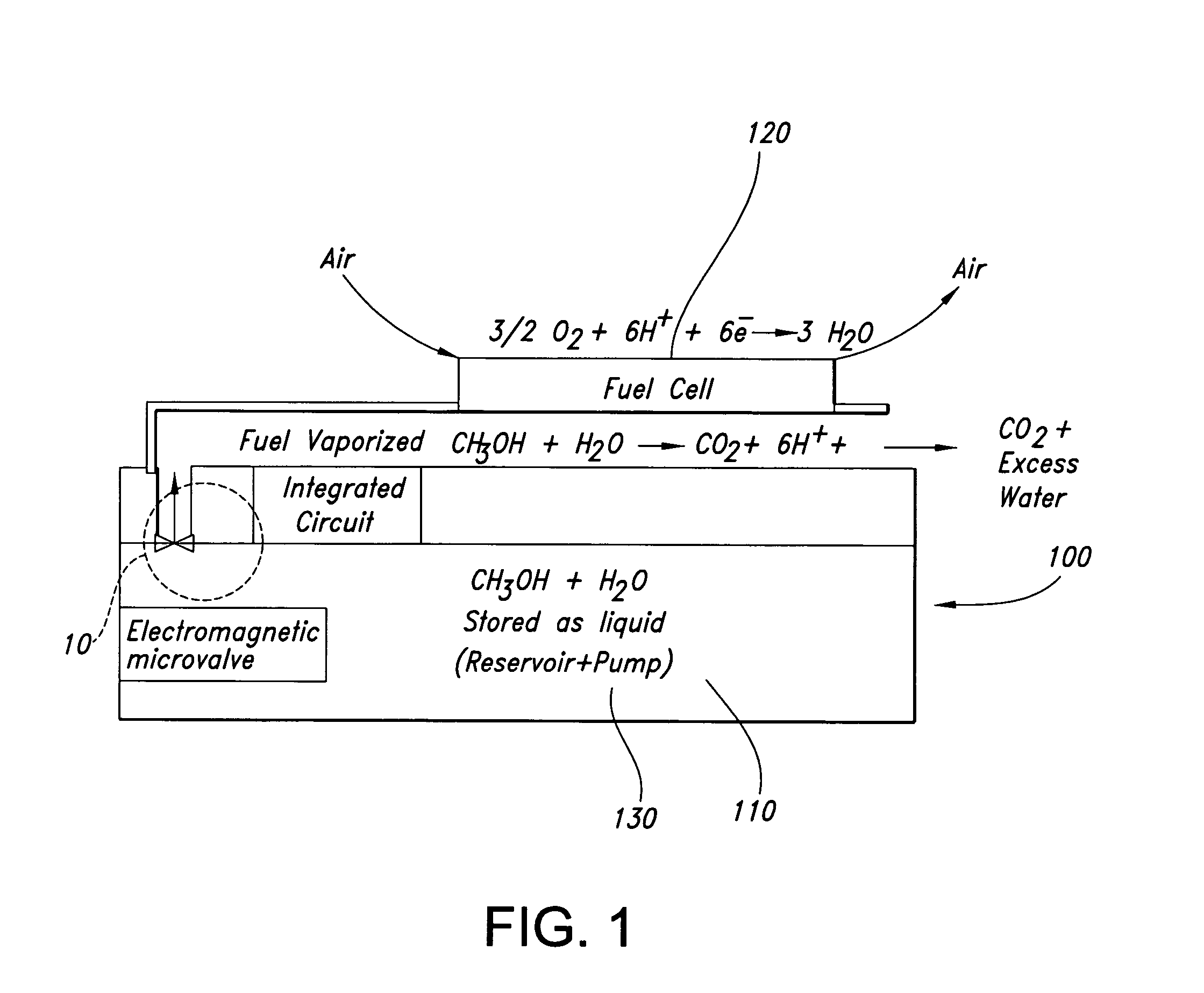Single substrate electromagnetic actuator
a single-substrat actuator and actuator technology, applied in the field of single-substrat actuators, can solve the problems of not yet commercialization of the mems micro-valve, the current state of research in the field of micro-valves is not well established, and the mems valves developed in the research lab are simply not reliable and robust enough for commercial applications, etc., to achieve the effect of small dead volume, low power consumption system and low cos
- Summary
- Abstract
- Description
- Claims
- Application Information
AI Technical Summary
Benefits of technology
Problems solved by technology
Method used
Image
Examples
Embodiment Construction
[0162]Referring now in detail to the figures, wherein like reference numerals represent like parts throughout the several views, the present actuating system 5 comprises a microvalve 10 incorporating a valve flow channel 20, a membrane / diaphragm 30, an membrane activating mechanism 40, and a latching system 50. The present actuator is an active device that involves the mechanical movement of a membrane by an electromagnetic driving force.
[0163]The geometry of the valve is basically built on a substrate 160 preferable Si wafer. The base of the valve 10 is made from NiFe alloy and a coil 42 built on top of the base. A circular post 15a with the height of 10-20 μm is built in order to have a membrane with dome 32 attached on the edge of the post 15a.
[0164]The base of the valve 10 is known as the seat 12, and interfaces with the rest of the micro-fluidic system. The membrane / diaphragm 30 deflects / actuates to close or open the fluid flow. The membrane activating mechanism 40 provides th...
PUM
 Login to View More
Login to View More Abstract
Description
Claims
Application Information
 Login to View More
Login to View More - R&D
- Intellectual Property
- Life Sciences
- Materials
- Tech Scout
- Unparalleled Data Quality
- Higher Quality Content
- 60% Fewer Hallucinations
Browse by: Latest US Patents, China's latest patents, Technical Efficacy Thesaurus, Application Domain, Technology Topic, Popular Technical Reports.
© 2025 PatSnap. All rights reserved.Legal|Privacy policy|Modern Slavery Act Transparency Statement|Sitemap|About US| Contact US: help@patsnap.com



